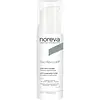What's inside
What's inside
 Key Ingredients
Key Ingredients

 Benefits
Benefits

 Concerns
Concerns

No concerns
 Ingredients Side-by-side
Ingredients Side-by-side

Water
Skin ConditioningButylene Glycol
HumectantGlycerin
HumectantDipropylene Glycol
Humectant1,2-Hexanediol
Skin ConditioningNiacinamide
SmoothingRaffinose
Skin ConditioningBetaine
HumectantCarbomer
Emulsion StabilisingEthylhexylglycerin
Skin ConditioningTromethamine
BufferingAdenosine
Skin ConditioningHydrolyzed Sclerotium Gum
HumectantDisodium EDTA
Allantoin
Skin ConditioningCynanchum Atratum Extract
Skin ConditioningHydrolyzed Hyaluronic Acid
HumectantSodium Hyaluronate
HumectantCaprylyl Glycol
EmollientPolyglyceryl-10 Laurate
Skin ConditioningAcetyl Hexapeptide-8
HumectantPalmitoyl Tripeptide-5
Skin ConditioningAcetyl Tetrapeptide-5
HumectantPalmitoyl Pentapeptide-4
Skin ConditioningAcetyl Hexapeptide-38
Skin ConditioningNonapeptide-1
Skin ConditioningPentapeptide-18
Skin ConditioningWater, Butylene Glycol, Glycerin, Dipropylene Glycol, 1,2-Hexanediol, Niacinamide, Raffinose, Betaine, Carbomer, Ethylhexylglycerin, Tromethamine, Adenosine, Hydrolyzed Sclerotium Gum, Disodium EDTA, Allantoin, Cynanchum Atratum Extract, Hydrolyzed Hyaluronic Acid, Sodium Hyaluronate, Caprylyl Glycol, Polyglyceryl-10 Laurate, Acetyl Hexapeptide-8, Palmitoyl Tripeptide-5, Acetyl Tetrapeptide-5, Palmitoyl Pentapeptide-4, Acetyl Hexapeptide-38, Nonapeptide-1, Pentapeptide-18
Water
Skin ConditioningGlycerin
HumectantPropanediol
SolventAcetyl Glycyl Beta-Alanine
Skin ConditioningCellulose Gum
Emulsion Stabilising1,2-Hexanediol
Skin ConditioningCaprylyl Glycol
EmollientDisodium EDTA
Sodium Hydroxide
BufferingChlorphenesin
AntimicrobialPolydatin Glucoside
AntioxidantSodium Chloride
MaskingSodium Glycolate
BufferingTetrapeptide-30
Skin ConditioningLactic Acid/Glycolic Acid Copolymer
Skin ConditioningPalmitoyl Sh-Octapeptide-24 Amide
Skin ConditioningPolyvinyl Alcohol
Palmitoyl Tripeptide-5
Skin ConditioningPalmitoyl Sh-Tripeptide-5 Norisoleucyl Sh-Nonapeptide-1
Skin ConditioningWater, Glycerin, Propanediol, Acetyl Glycyl Beta-Alanine, Cellulose Gum, 1,2-Hexanediol, Caprylyl Glycol, Disodium EDTA, Sodium Hydroxide, Chlorphenesin, Polydatin Glucoside, Sodium Chloride, Sodium Glycolate, Tetrapeptide-30, Lactic Acid/Glycolic Acid Copolymer, Palmitoyl Sh-Octapeptide-24 Amide, Polyvinyl Alcohol, Palmitoyl Tripeptide-5, Palmitoyl Sh-Tripeptide-5 Norisoleucyl Sh-Nonapeptide-1
Ingredients Explained
These ingredients are found in both products.
Ingredients higher up in an ingredient list are typically present in a larger amount.
1,2-Hexanediol is a synthetic liquid and another multi-functional powerhouse.
It is a:
- Humectant, drawing moisture into the skin
- Emollient, helping to soften skin
- Solvent, dispersing and stabilizing formulas
- Preservative booster, enhancing the antimicrobial activity of other preservatives
Caprylyl Glycol is a humectant and emollient, meaning it attracts and preserves moisture.
It is a common ingredient in many products, especially those designed to hydrate skin. The primary benefits are retaining moisture, skin softening, and promoting a healthy skin barrier.
Though Caprylyl Glycol is an alcohol derived from fatty acids, it is not the kind that can dry out skin.
This ingredient is also used as a preservative to extend the life of products. It has slight antimicrobial properties.
Learn more about Caprylyl GlycolDisodium EDTA plays a role in making products more stable by aiding other preservatives.
It is a chelating agent, meaning it neutralizes metal ions that may be found in a product.
Disodium EDTA is a salt of edetic acid and is found to be safe in cosmetic ingredients.
Learn more about Disodium EDTAGlycerin is already naturally found in your skin. It helps moisturize and protect your skin.
A study from 2016 found glycerin to be more effective as a humectant than AHAs and hyaluronic acid.
As a humectant, it helps the skin stay hydrated by pulling moisture to your skin. The low molecular weight of glycerin allows it to pull moisture into the deeper layers of your skin.
Hydrated skin improves your skin barrier; Your skin barrier helps protect against irritants and bacteria.
Glycerin has also been found to have antimicrobial and antiviral properties. Due to these properties, glycerin is often used in wound and burn treatments.
In cosmetics, glycerin is usually derived from plants such as soybean or palm. However, it can also be sourced from animals, such as tallow or animal fat.
This ingredient is organic, colorless, odorless, and non-toxic.
Glycerin is the name for this ingredient in American English. British English uses Glycerol/Glycerine.
Learn more about GlycerinThis synthetic peptide is created from lysine, valine, and palmitic acid.
According to the manufacturer, in-vitro studies show tissue growth and collagen synthesis. Another in-vivo study found 60 volunteers saw a significant reduction in wrinkles after 84 days.
Due to its palmitic acid base, this peptide may not be fungal-acne safe.
Learn more about Palmitoyl Tripeptide-5Water. It's the most common cosmetic ingredient of all. You'll usually see it at the top of ingredient lists, meaning that it makes up the largest part of the product.
So why is it so popular? Water most often acts as a solvent - this means that it helps dissolve other ingredients into the formulation.
You'll also recognize water as that liquid we all need to stay alive. If you see this, drink a glass of water. Stay hydrated!
Learn more about Water